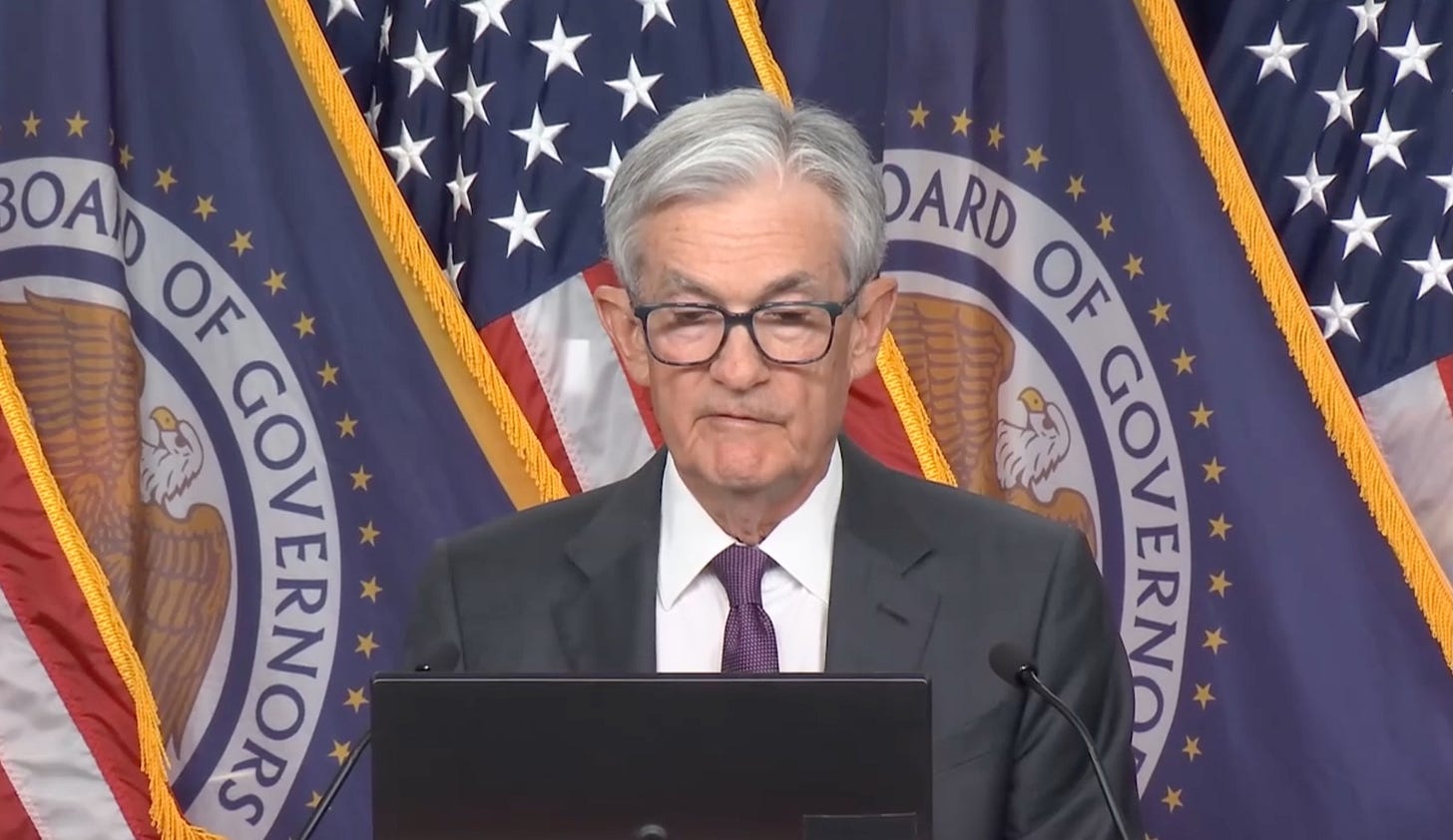The Fed Joins the “Resistance”
Powell, Goolsbee, and Logan fight Trump
It’s understandable that the Federal Reserve should want to maintain its independence rather than appear to be directed by President Trump’s Tweets. Yet recent events are making it look like, rather than being nonpartisan, the central bank is actively trying to make Trump fail.
Yesterday saw a strong stock-market rally on the news that President Trump had put a 90-day pause on many of his tariffs. This morning brought a report on the Consumer Price Index that showed prices actually dropped in March, supporting the view that, as we quoted Scott Grannis earlier this week, “I detect no reason to worry about inflation.” You’d think that would help open the door to further rate cuts by the Fed.
Instead of being quiet or touting the welcome progress against inflation, Fed officials appeared in public, as if on cue, to douse hopes of a rate cut. The president of the Federal Reserve Bank of Chicago, Austan Goolsbee, spoke at the Economic Club of New York. “Goolsbee reiterated he still believes interest rates will be lower 12-18 months from now, but indicated the Fed is in a wait-and-see mode at present,” Bloomberg reported. Forbes quoted him as saying, “The Fed’s timetable is not the market, stock market’s timetable.”
Goolsbee was chairman of the Council of Economic Advisers under President Obama. He’s mentioned in that highly illuminating podcast by the former president of the Richmond Fed, Jeffrey Lacker, that we also flagged earlier this week. “I think that the Chicago appointment was striking, because it was Austan Goolsbee, with a partisan policymaking background. And the Fed has a history of trying to remain as non-partisan as possible.”
The president of the Dallas Fed, Lorie Logan, also gave public remarks today. “History teaches that when higher inflation expectations become entrenched, the road back to price stability is longer,” she said.
“A sustained burst of inflation could lead households and businesses to expect further price increases, especially following the persistently elevated inflation in recent years,” she said. “It will be important to keep any tariff-related price increases from fostering more persistent inflation. For now, I believe the stance of monetary policy is well positioned.”
You can interpret Goolsbee and Logan as independent actors, but the reality is that Powell is the calliope-master. As Lacker notes in the podcast, Powell and his board of governors have played an increasingly prominent role in picking the regional Fed presidents, in a way that has translated into “less of a propensity to express dissenting views.” Everyone’s on high alert about the stifling ideological conformity and absence of viewpoint diversity in elite higher education, but the Federal Reserve is giving the Ivy League a run for its money when it comes to homogeneity and obedience. Lacker notes this is true not only on monetary policy but even in the economic research published by the Fed, “an increasing share of the research is on progressive topics, so climate change, inequality, things that are important, but better addressed by Congress, in my view.”
What’s next, lawn signs outside the Marriner Eccles Fed headquarters building in Washington that say “not my president” or “In This House, We Believe…”?
Keep reading with a 7-day free trial
Subscribe to The Editors to keep reading this post and get 7 days of free access to the full post archives.



